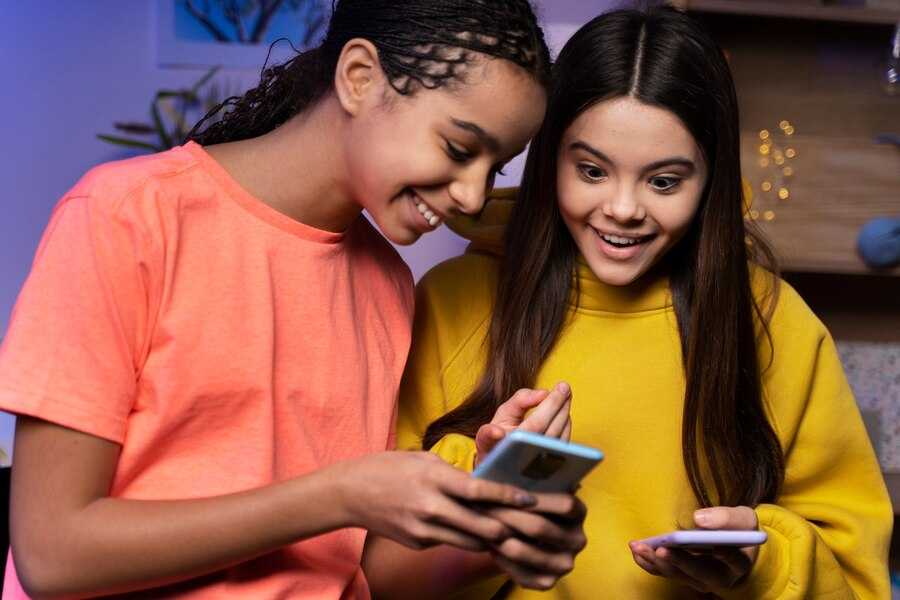BY KAHA G.
As the sun rises over the horizon, a new day begins, full of endless possibilities and opportunities. With the world at our fingertips and technology advancing quickly, it’s no wonder that we’re constantly bombarded with information and distractions. Amidst all the noise and chaos, finding the right balance between education and technology and minimizing distractions is crucial for creating a good learning environment. Today, let’s explore the recent cell phone regulations in Ontario schools and their impact on students. As well as my opinion as a student on it and how technology is affecting our youth.
According to thestar.com, Ontario’s Education Minister Stephen Lecce recently announced new cell phone regulations in schools that have sparked mixed feelings among students. From September, every public school in Ontario will be required to enforce uniform rules regarding cell phone usage. For kindergarten through grade six students, this means keeping phones on silent and out of sight throughout the school day. While older students in grades seven and above will have some freedom to use their devices during breaks; the ban will be in effect during class time.
Many students rely on their smartphones for various purposes, from research to communication with others. While the goal of enhancing focus and concentration is important, students worry about the potential impact on their ability to engage with technology as a learning tool. I think that the phone ban won’t be that bad, and it will give students who use their phones often when the teachers give a lesson no choice but to listen. However, I think we should be able to use our phones in classes teaching other languages like French. Or, at least during times when we are expected to write something down in French, we should be able to search for words and sentences we don’t know for these writing activities.
Furthermore, the government’s decision to involve parents in the enforcement of these regulations is both good and challenging. While parental support is essential for the success of these measures, it also means facing potential consequences at home if students fail to comply with the rules.
Despite these concerns, finding the right balance between education, and technology and minimizing distractions is crucial for creating a healthy learning environment. As Premier Doug Ford puts it, “While you’re in learning, you’ve got to learn.”
Before I end this article, I would like to discuss why it is necessary to mention students from kindergarten to grade four in this ban. First of all, they shouldn’t have phones, because they aren’t old enough. It is crazy for me to imagine little kids of these ages to be putting away their phones until the end of the day. As much as we want to deny it, I think it’s the parent’s fault. At this age, we shouldn’t be giving phones to children at that age at home let alone to take them to school. An iPad at home is fine but phones; ridiculous!
Why are people letting the internet take the role of the parents by teaching kids? Trust me, I know that my generation (Gen Z) is messed up, but if we’re this bad imagine the generations to come. If we increase the time kids spend on technology, when are they going to have time to go outside and play in the park and to be a kid? Children in grade two are asking for air pods and phones. Although having a set screen time for children like (1-2) hours is reasonable, we should normalize having a balance between tech and education.
Most of us have that impulse to reach for our phones, and it is because we’re addicted. If we’re freaking out that we won’t have a phone during school, then it tells us how we have been doing as a society. Normalizing balance for students in pre-K and up is crucial for our success.
When enforcing regulations: educators, policymakers, and students need to consider different perspectives. This is by promoting discussion and collaboration between students, parents, and educators so that a well-balanced approach that prioritizes both focus and technological proficiency in the classroom can be achieved.


 Community News2 weeks ago
Community News2 weeks ago
 Community News2 weeks ago
Community News2 weeks ago
 Community News2 weeks ago
Community News2 weeks ago
 Junior Contributors1 week ago
Junior Contributors1 week ago
 Community News2 weeks ago
Community News2 weeks ago
 Community News2 weeks ago
Community News2 weeks ago
 Community News2 weeks ago
Community News2 weeks ago
 Community News2 weeks ago
Community News2 weeks ago

























